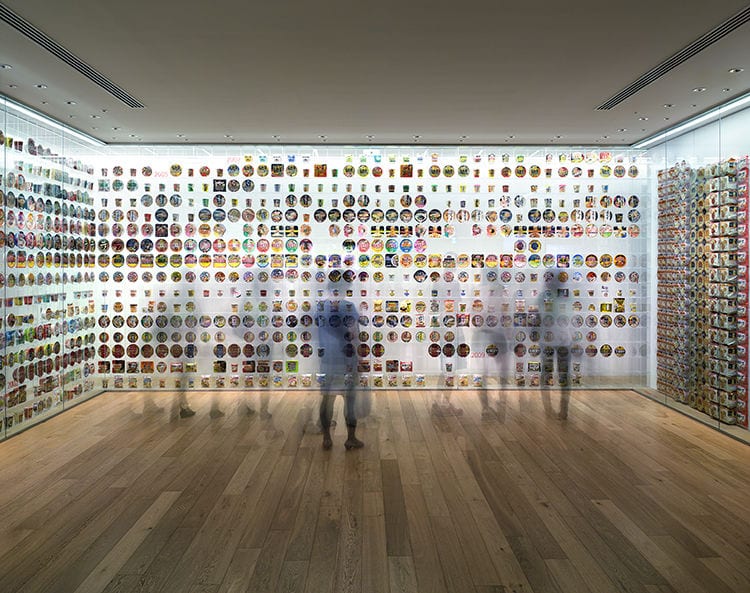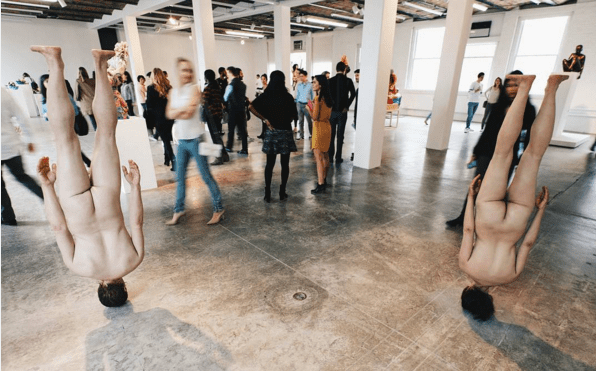At Artsy, we strive to make all the world’s art accessible to anyone with an internet connection. This includes getting past the jargon of artspeak and expanding the audience of art lovers through clear, accessible writing about art. On the gallery insights team, we are focusing on how galleries can do the same by creating a clear, jargon-free press releases.
Arts writer Alex Bacon first caught our attention after we noticed his writing in countless gallery press releases, for galleries from Almine Rech in Paris to David Zwirner in New York, as well as catalogue essays for galleries including Paul Kasmin, Luxembourg & Dayan, Pace, and Cheim & Read. Now a go-to writer for top galleries, Alex is also currently completing his PhD at Princeton. We invited him to contribute tips on how to write a great press release.
Writing press releases for exhibitions is an essential task for any commercial gallery as they often serve as the first introduction to the show for the public, collectors, and most importantly, press. Press releases can have a major effect on whether people visit, review, and ultimately buy from exhibitions.
A press release should get people in the door. That is its primary purpose, so it should be written with this in mind. Nonetheless, galleries sometimes approach the press release as an afterthought or secondary element of a show, which results in a missed opportunity to address an audience and shape their opinions, feelings, and expectations for a gallery and its programming.
Keep These Tips in Mind When Writing Your Next Release
First, give readers the basic information about the show: who is in it, what is being shown, where it is, and when it will be on view. Ensure that the most pertinent facts are covered.
Don’t try to cover everything in your release; you should save most of the deeper context, intellectual and otherwise, for when people visit the gallery. Still, you should include some key context in the press release to make the show accessible for those who want details—like press—while not distracting others who are skimming for sound bites. Remember that journalists and writers like to form their own opinions, so the context provided in a press release should be in the spirit of being informative, rather than dictating a single point of view.
Another thing to keep in mind: press releases, from the quality of the writing to the quality of its presentation, present an opportunity to establish what you stand for as a gallery, and they can help to set the stage for a long-term relationship with the press. Keep readers in mind who you’d explicitly like to reach, just as one would think about audience for any written text.

Cup Noodles Museum, Yokohama (TV14623), 2014. Benrubi Gallery
Some General Rules of Thumb
- Don’t write a press release like you would an academic essay. This style is alienating in a press release and often doesn’t even impress the scholarly set, as it devolves into jargon.
- Avoid obscure, “creative” forms of writing like poems, stream-of-consciousness rants, quotes from works of fiction, or terse elliptical statements. Although some artists may lean towards these, they inevitably avoid speaking directly to the meaning of their work—and this is exactly what the gallery visitor wants.
- Be precise. List what works will be on view, describe what they will look like, and how they fit into the artist’s previous practice, as well as those of his or her peers.
- Always include a short artist bio, which should highlight the artist’s career and mention forthcoming shows and projects.
- Finally, since many people read these texts on a mobile device, your press release should be optimized for legibility on mobile. It’s a good practice to send the document around the office and check how it looks on different devices. If you’re planning to send out an email, use an email rendering tool like Litmus or Email on Acid to ensure the quality of your layout.
Hiring an Outside Writer
- Ask the artist who he or she would like to write the press release. Often the artist will have someone in mind who is familiar and engaged with their work. Do not, however, let this lull you into being excessively flexible about the parameters of the text.
- Be clear about what exactly you expect. After all, you probably don’t want to spend gallery resources on a few tautological statements or a curator’s half-baked prose.
- It can be nice to approach the task like you would selecting someone to write a more formal essay on an artist or exhibition: ask someone with demonstrated skill in talking about similar work. Look up who has written on the artist in the past.
- Be open to approaching freelance writers at the blogs and publications you read and respect, and those in dialogue with your program. Keep a list of these contacts and article links so you have a database to draw from.

Tony Mattelli, MoMA PS1. Courtesy of @brooklynarchitect.
Formatting
- Keep the formatting simple. Try to stick to five paragraphs.
- The opening paragraph should have concrete details of works being shown.
- The next two paragraphs should describe the show in more detail.
- The fourth paragraph should include the artist’s bio.
- The final paragraph can include follow-up and contact information.
- Fitting all text on a single page can be very effective. The length of your release should be between 400 and 1000 words. No more.
Timeline
Though timelines will vary given a gallery’s internal workflow, you should request a draft of the press release from your writer at least a month in advance of the opening of the exhibition. This will allow ample time for your writer to incorporate feedback and ensure that they are on call the week of the opening to address any last minute details that are being finalized in the text.
By guest author Alex Bacon
Alex Bacon is a scholar, writer, and curator based in New York. His most recent curated exhibition is Morris Louis/Landon Metz at Paul Kasmin Gallery, New York. He is currently completing his PhD in Art & Archaeology at Princeton University and has essays forthcoming in monographs on artists such as Ad Reinhardt, Stanley Whitney, Rodolfo Aricó, and Michael Staniak.


